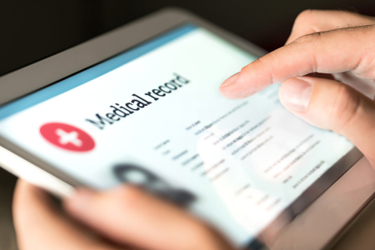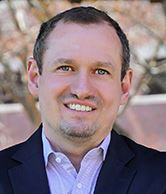The State of Real-World Data – And Where We Go From Here

By Ed Miseta, Chief Editor, Clinical Leader

There are many questions that a lot of clinical executives have about real-world data (RWD) and real-world evidence. There are questions about the quality and completeness of the data, the new digital apps generating data, patient privacy, its use in synthetic control arms, and the impact it might have on the patient diversity problem.
In 2021 Clinical Leader hosted a webinar on this topic. Christoph Koenen, EVP and chief medical officer for Otsuka Pharmaceutical Companies (U.S.) was one of the speakers. This Q&A presents his insights on where the industry stands on RWD and where it will go from here.
Ed Miseta: The most important thing we get from a clinical trial is the data we gather for FDA approval. The data must be clean and high quality. How can pharma companies ensure the RWD they are gathering are meeting the same quality standards as the data collected in trials?

When a company collects real-world data, it should make sure it's based on the research question it intends to answer for the purpose of evaluating drug safety. For example, the FDA has already outlined how we can use real-world data that is available in electronic health records. Safety studies can be conducted and that is clearly laid out in guidance to the industry. Still there are other approaches we should keep in mind. For example, evidence is on ICD-9 and ICD-10 coding. We need to make sure that coding is done correctly because it is going to have a huge impact. It might be inconsistent or incomplete, and that will then not enable us to evaluate changes over time.
Another frequently used type of data right now is registry information. A lot of pharmaceutical companies and scientific organizations are utilizing registries to generate real-world data. When we do that, we must make sure we gather enough follow-up information to really answer the question. We must also ensure the validity and quality of the data. Using missing or incomplete data can have a huge impact of the quality of the output. With respect to data relevance, I think it's important to examine whether a full range of outcomes that could be used for studying points was consistently captured in that data. It might not necessarily always be the case. Connecting data elements residing in different parts of the healthcare system, especially in the U.S., will be critical. Otherwise, we might end up with an incomplete picture of the patient journey, which would ruin the use of real-world data and generating real-world evidence.
Miseta: You mentioned incomplete data. Can you discuss what that looks like when we are discussing real-world data and real-world evidence?
Koenen: In a randomized controlled clinical trial, you try to minimize that incomplete data as much as you can. Too much of it, if you have patient drop-out for example, will create an issue with the validity of the trial. To some extent, I think you must make the same assumption of real-world evidence. You cannot be as strict with real-world evidence as you are in randomized controlled clinical trials. But, in general, you want to ensure that your data is as complete as possible. What makes it more complicated with real-world evidence is that technically your patients will not drop out. You will just not have the data to do further follow up, and there's no way to know that in advance.
That's why it's so important that you set up your real-world evidence collection in a way that you try to minimize incomplete data as much as possible. One example I can give is from the U.S. healthcare system. If a patient goes from one healthcare system to the next, or goes from a hospital to home-based care, there is a danger of not being able to continue to collect this evidence. This is equivalent to a dropout in a randomized controlled clinical trial. By combining different data sets you can try to minimize that. Still, that is something you need to plan for in advance to make sure it doesn't happen or that you can minimize the impact.
Miseta: Clinical trials are gathering data from sources that did not exist just 10 or 15 years ago. A recent report from the IQVIA Institute noted 90,000 new digital health apps were added in 2020 and the number of digital health apps currently stands at around 350,000. Does that information tell you anything about the sources of real-world data and how those sources of data may be changing?
Koenen: What it tells me is we have to keep an extremely open mind in respect to all sources of data. It highlights something else as well. Everyone who works with real-world data and wants to generate real-world evidence must ask themselves if they can handle everything on their own. This is an area for collaboration. When it comes to determining the quality of the data, a lot of variables play a role, and you must ask yourself if this is something you can do on your own. I personally do not think most sponsors can, and at Otsuka we decided we can't do all of that on our own.
In the mental health space, we have partnered with Holmusk, a behavioral health focused data company. We believe that only through this kind of collaboration can we fulfill our ambition. Through this corporate collaboration we will figure out how to connect different paths of data that is externally available. For example, U.S. health records of patients remain in different ecosystems now. Unless we figure out a rigorous way to connect them, the real-world evidence we generate from this data will always have gaps and be incomplete. Those gaps are something we're confident we can close through the collaboration with Holmusk.
Miseta: One of the concerns with RWD is the privacy of the patients. What can sponsors do to ensure we are respecting that?
Koenen: I think it must be absolutely clear that patient privacy and confidentiality is key. I believe it will be important, for example, for the U.S. health care system to connect different data sets. But that can only be done if we anonymize the patient data. Something else that will be increasingly important is a patient that has been part of our randomized controlled clinical trial and then enters the real world. We want to follow up with that patient in the real world while ensuring that we respect the patient’s confidentiality.
We will need the ability to follow patients through different data sets to ensure the completeness of the data while making it impossible to identify the patient.
Miseta: Many believe RWD will enable greater use of synthetic control arms in clinical trials. Is that something Otsuka is looking into, and do you see its use growing in the future?
Koenen: Absolutely. I think there's no question that synthetic control arms are increasingly being used in the clinical trial process. For example, one of the things we're looking at in the collaboration I noted earlier is the use of synthetic control arms in the mental health space. Synthetic control arms have been successful, but there have been a lot of examples as well where they haven’t been successful.
Researchers using synthetic control arms will need to ask themselves what they are looking at. Is it a well-defined natural history that you are observing? Is it an objective endpoint? Are the patients comparable between your synthetical control arm and your active arm? You need to make sure you're fully aware of all the various measurements now. I also think that when you make the decision to use a synthetical control, it must fit the specific intervention you're testing. You need to make sure that the synthetic control that you're using is really matching up because any regulator will carefully scrutinize how valid your synthetic control is as a comparison to your active arm.
Miseta: Any thoughts on how RWD and RWE might impact the patient diversity problem we have in pharma
Koenen: I believe the use of real-world evidence will help overcome the lack of diversity in randomized controlled clinical trials. Still, it's a bit of a double-edged sword. On the one hand, you can conduct clinical trials the way you've always done it and then use real-world evidence to close that gap. However, I believe pharmaceutical companies have an ethical obligation to ensure randomized controlled clinical trials already include the diversity that is represented in real life. Utilizing real-world approaches like pragmatic trials to bring the trial to the patient, will help. The industry should also broaden site locations and increase the diversity of investigators.
